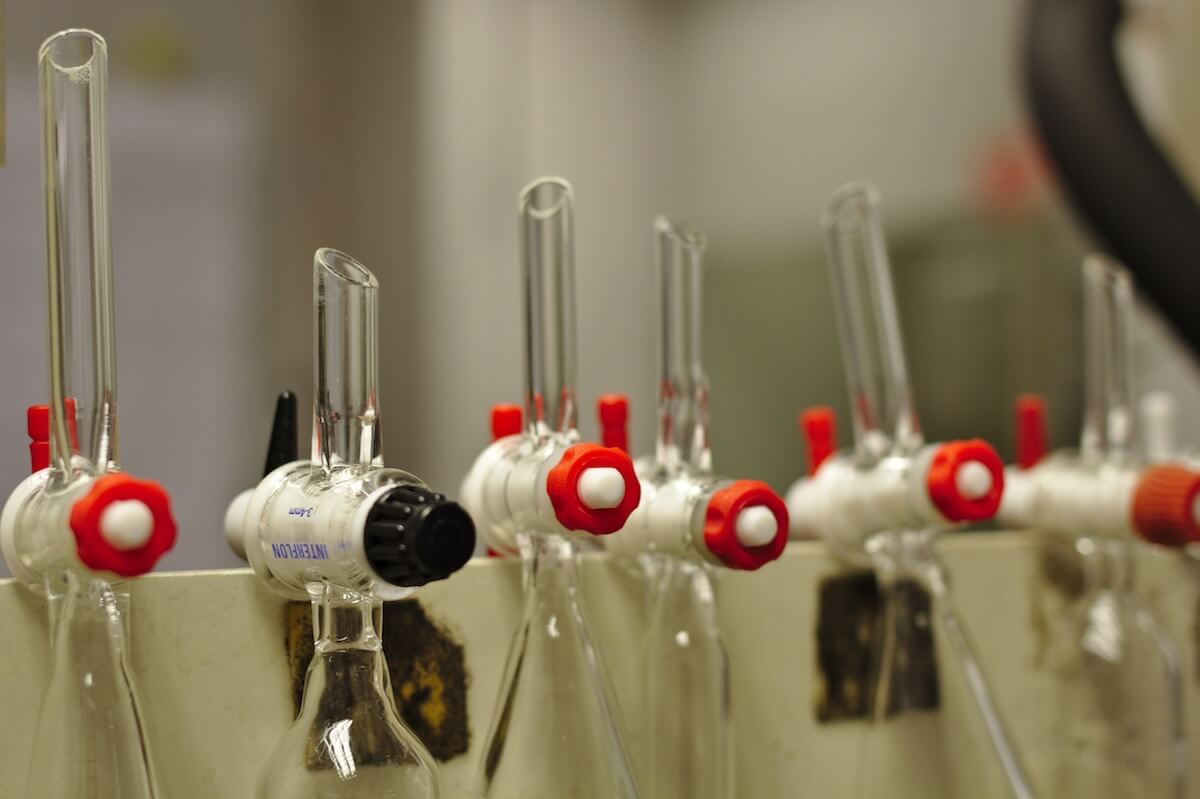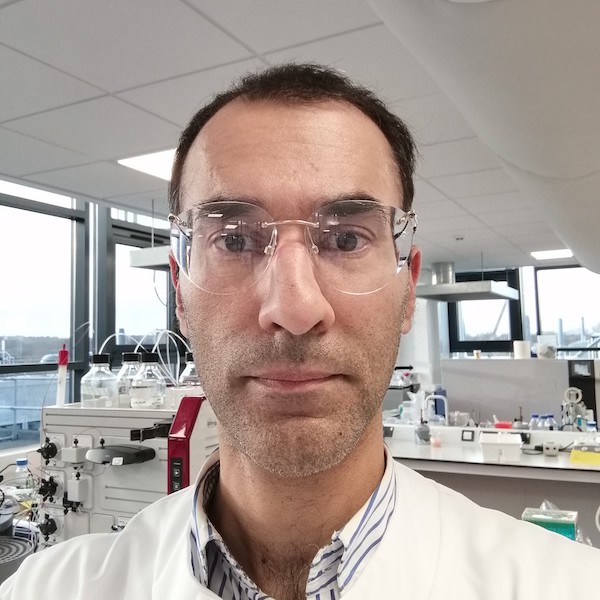This week, we bring you a Q&A with Danish Malik, Senior Lecturer at Loughborough University.
This piece was produced in collaboration with Kisaco Research.
Jessica: Could you start by telling us a little bit about your background and your research interests?
Danish: I’m a biochemical engineer by training. I’m a Senior Lecturer in the Department of Chemical Engineering at Loughborough University. We’ve got a large centre for biological engineering. I lead the advanced biologicals and phage bioprocessing group. My group is focusing on scalable manufacturing platforms for next generation biologicals that are different from monoclonal antibodies, proteins and peptides.
With phages—there’s an order of magnitude difference in size, which means you can’t take off-the-shelf solutions that have been developed. For example, chromatographic techniques, which might work well for proteins, need to be adapted for use with phages. New tools, techniques and methods need to be developed for this next generation of biologicals, so there’s an opportunity for academics like myself to explore some of the challenges that exist there.
And not only are we interested in manufacturing, upstream and downstream purification, we’re also looking at how we can develop formulation strategies to improve the stability of these biologicals, to help develop novel methods for micro- and nano-encapsulation. The delivery of these at their target sites is extremely important, and is one of the challenges that I think some of the early-stage developers may overlook. So what we’re looking for are research gaps and research questions that are very early-stage and require academic input.
What should phage researchers and biotech professionals be thinking about in terms of scaling up their phage production?
I think they need to think at an early stage about process development. When people do their selection of phage candidates, they typically look at host range, whether phages are truly virulent, don’t have propensity for lysogeny, and so on. Those are all important, but there are lots of other characteristics that are also worth screening for, like ease of manufacture, titres, impurities, stability, and formulation. These concepts need to be thought about early on.
You need to think about what the target product profile is going to look like, what are going to be the critical quality attributes of the product. For trials or development work, you need to think about how much to manufacture, about the unit operations you’re going to use in the process, and how amenable they are to the different phages that you would want to manufacture. The simpler the process is, the better.
The other thing is if you’re going to need cGMP material, it’s important to think about whether you’re going to outsource that to a CMO, and whether they have the capabilities and expertise, or whether you have consultants on board that can translate what you need to the CMO.
I’ve heard you speak before about how academic-commercial collaboration is especially important in the area of phage manufacturing — can you elaborate on why that is?
There are a few contract manufacturing organizations (CMO) that have expertise with phage manufacturing, but even those that exist are sticking to what’s safe for them. There’s plenty of room for innovation. I think that’s where the academic side of things comes into play, to show what’s possible, and as a consequence, to help overcome significant bottlenecks, reduce costs, and improve process intensification. And you can glean a lot of process development data through small scale work, which is not very costly, which is helped by working with a contract research partner like myself at a university.
So say a company had a phage cocktail—would they send it to you to do small-scale tests?
Yes they would send me the individual phages to begin with, and I would look at what’s possible, in terms of pushing the boundaries in terms of manufacturing, purification and formulation. For example, they might have a challenge regarding endotoxin removal—I have a number of approaches that work well. The key with phages is that each one is different and unique. It therefore does require process optimisation—looking at stability, formulation, encapsulation, working with them to encapsulate material that can be tested in small animal models—those are the sorts of things that I do.
Are companies typically excited about the prospect of working with you?
Yes, they are generally very interested in academic collaboration—particularly at the early, preclinical development stage. Universities have a lot of knowledge, expertise, and facilities that are available at low cost, and that can be tapped into quite easily. Particularly for small biotech startups, that don’t have the infrastructure—they can work with organizations like myself, and we can help them look at some of the options early on.
Would you be involved in the large-scale manufacturing?
I wouldn’t do that; I would develop the process for them, and that would be translated to a CMO that would do the GMP manufacturing. Simply because that’s not the business that universities are in. We’re not a CMO with GMP manufacturing capability. We can make GMP-like material. We can do the process development, the formulation development, then hand it over to a CMO that has a dedicated cGMP manufacturing facility. We’d work with a CMO that would use our formulated phage process, and then manufacture it to scale for our client.
Are you sensing that there are more contract manufacturing organizations getting into phages, or is it still new for that industry?
It depends. If it’s something that’s fairly easy for them to do, then they’ll do it. On the other hand, because it’s a very new thing—and you know the term virus can be a bit worrying—then that can raise concerns. So I would say that there are very limited players at this stage that would be willing to do it, which is why companies have to start thinking earlier on, ‘who is going to make this for me?’ And that’s where I come in. For a small startup company, we can do small-scale process development work that gets key process data and process parameters, and then translate that information to CMOs.
Are there phage manufacturing pitfalls that you see people falling into?
Phage cocktails are complex mixtures; they’re very different drug substances. I think it’s worth understanding this, understanding that if you’re going to mix them together, their compatibility and stability needs to be thought about. They are not proteins and not monoclonal antibodies, they have key differences, they’re an order of magnitude bigger. For proteins, you might be able to carefully manipulate the pH to enhance a protein’s separation from endotoxin based on the isoelectric point, whereas phages might be more tricky because endotoxin may be phage-bound. So there’s a lot of complexity there that needs to be thought about, and usually in small startup firms, that expertise is not easily available.
And the thing is, you don’t know what you don’t know. Phage companies may have expertise in some aspects of phage biology, but the one thing I’m seeing is there is a lack of process engineering expertise, formulation expertise, expertise related to downstream purification. So although people may think, ‘we can take this off-the-shelf solution, we can buy a kit and press a button, and it will do the job for us’, they don’t really understand the fundamental chemical engineering science behind these unit operations, so they’re not using them to the best possible capability, or they’re using them in a way that’s actually detrimental for them.
Simply by optimizing the same unit operation, you can significantly change the output of the process. Whereas one particular way of processing the material might look as if it’s a dead-end, it may actually work beautifully for them, but they don’t have the expertise to understand how to do this.
Sometimes we’ll work with a biopharmaceutical company, and when I talk to them, they say ‘I tried that and it didn’t work’, and I say ‘why don’t you send it over to me, and I’ll see if I can make it work for you’. And 9 times out of 10, I can make it work for them, and that hugely speeds up their process development.
How much do differences between phages affect manufacturing?
I’ll give you an example. I had a commercial partner that was interested in a phage cocktail that had a number of different phages, and the phage titres they were getting were quite different. Morphologically, the phages might look identical, but actually, there’s a big difference here, because one phage is present at two orders of magnitude lower in concentration.
When it comes to processing them in the same unit operation, the amount of endotoxin for the lower-titre phage will be two orders of magnitude higher after concentrating the phage, and that has huge implications. It may mean huge variability in the output, it may mean that you have to look for a different candidate phage to cover that host range.
So that’s why thinking of these things early on can be quite helpful. And again working with academics like myself can be helpful for companies, in that I can help identify these things early, and we can look at what we could do in order to overcome these issues.
I’ve been hearing a lot about spray-drying recently—do you see it as an effective method for phage preparation?
Spray-drying is a highly scalable process; it allows the production of a dry powder form of material. If the phages in the dry powder form are highly stable, then that has a lot of advantages.
I do a lot of spray-drying of phages as a unit operation at the end of the process, before perhaps it’s tableted for gastrointestinal applications, or for storage of phages in phage banks; there are many reasons why you might want the material in a dry powder form. It seems to be broadly applicable, which is a good thing. Also, pharmaceutical companies and CMOs understand spray-drying, so if you can spray-dry, then that’s quite useful.
Are there organizations you know of in the US that manufacture phages on a contract basis?
I know some people that are thinking about setting up capability to do it, because they can see that there’s a gap there. But I’m not working specifically with a CMO that’s based in the US. Some companies in the US are thinking of being able to produce small batches of GMP material for early stage work in-house, but they’re not amenable to taking on someone else’s drug substance and doing it for them.
What are your thoughts on the development of proprietary phage manufacturing methods?
You really have to think, where is the novelty, what is the non-obvious step? There can be innovation there, but in terms of using standard unit operations, it’s difficult to see where the novel, non-obvious step is going to come in. Certainly on the development of encapsulation strategies, there can be lots of innovation there.
For example, you’d find it pretty hard to patent the process of spray-drying for phages, but what you could patent is, say you found some novel phages, and perhaps they have particular attributes that make them more amenable to spray-drying. Or you might develop a formulation with phages that makes them less susceptible to shear damage using an aerosoling device, that could allow phages to be formulated for pulmonary delivery.
There are all sorts of scenarios where you could see that there’s something that is non-obvious, where you’ve developed some know-how that generates value.
What do you hope people will take away from your talk at Phage Futures next month?
Consideration of manufacturing challenges, from my perspective. Working in the translational space with industrial partners that are looking at their options, such as how they can go from upstream production, amplification of phage, all the way through purification, and then downstream formulation and stabilization.
I’ll go through some options that are really quite amenable, for example spray-drying, some of the options available for endotoxin purification, and some of the more exciting ways we can undertake micro- and nano-encapsulation of phages. These options could be bespoke solutions for particular target applications, which could lead to innovation, protection of IP, and so on, distinguishing a product and improving efficacy, as the real importance of ensuring high concentrations of active drug substances is that they are delivered intact at the concentration that you prepared them to be delivered at.
I will also present some in vivo data, where we’ve spray-dried some Salmonella phages and tested them in a poultry model as a food additive. And I’ll present some of my alginate-Eudragit micro-encapsulation work delivering bacteriocins in mice, which I didn’t present at Phage Futures in Brussels. This is all to show that these approaches allow evidence to be gathered about in vivo efficacy of the phage or the phage cocktail, generating pharmacokinetic and pharmacodynamic information, which is really useful.
This interview has been edited for clarity.
Further reading
This issue was produced in collaboration with Kisaco Research. Download the PDF version on their site here!
Check out their upcoming conference, where Danish Malik will speak about phage manufacturing:
The Phage Futures Congress (Feb 5-6, 2020) will bring together biotech, pharma, academia and governmental bodies to help move phage therapy forward into clinically and commercially viable therapeutics.
For a 10% discount, enter code PHAGEDIRECTORY at checkout!









